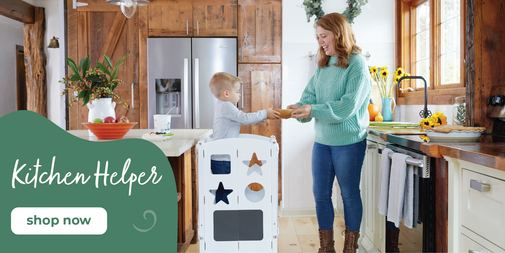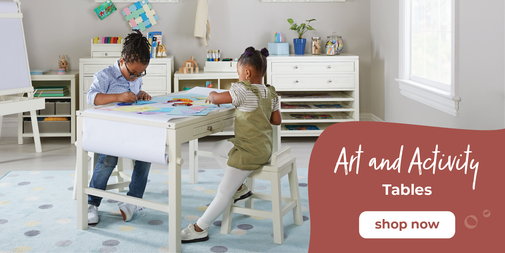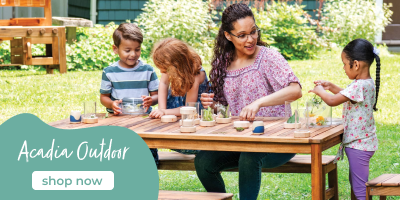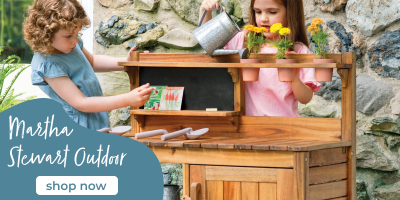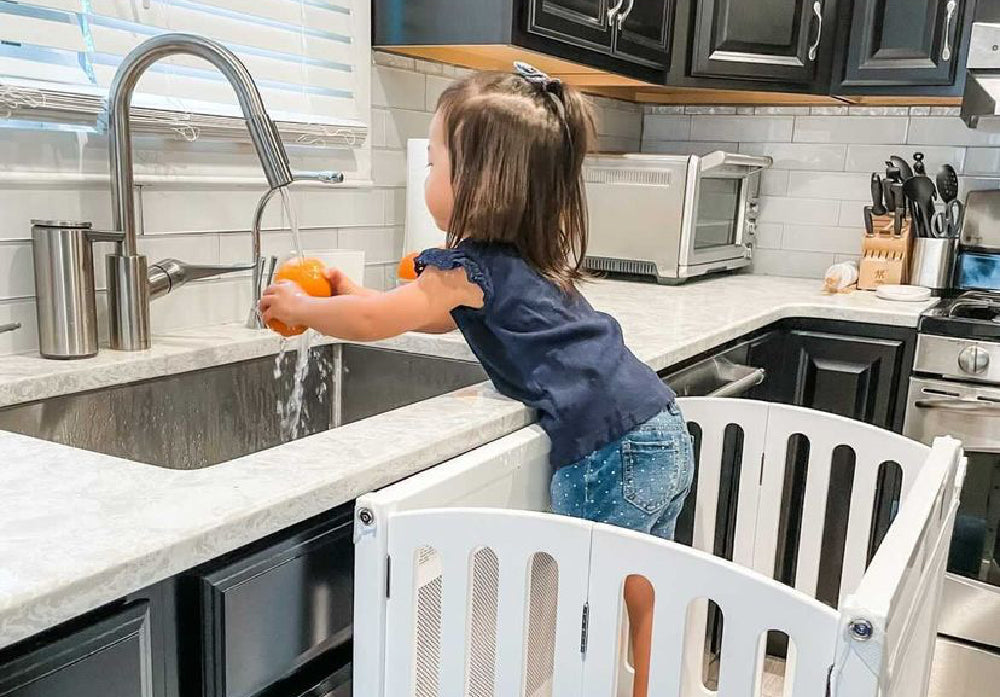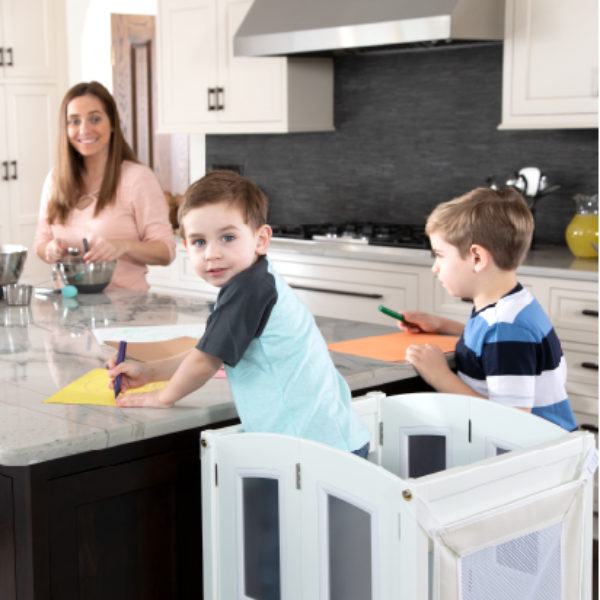How to Create a Safe Kitchen for Toddlers Using the Kitchen Helper

When it comes to working in the kitchen, a parent’s first inclination might be to keep children out to avoid potential accidents with sharp utensils, hot appliances and other hazards. Yet, kitchens are ripe environments full of opportunities for tactile learning and sensory exploration where children can learn. So how does one create a kitchen environment that is safe but also conducive to learning for a young child?
Safe Environments Promote Exploration
Children thrive in environments that have been carefully prepared to enable independence, and this includes the kitchen space. A kitchen that has been prepared for young children might provide child-sized plates and cups that are easily accessible, utensils that are sized to fit smaller hands, and tables and chairs that are at a child’s height. A carefully prepared kitchen is also a kitchen that feels safe. This might mean relocating sharp knives and utensils from low drawers to high drawers. For other parents, it means providing a safe platform for children to stand on at the kitchen counter. The Toddler Tower is a stool with high sides, a wide, adjustable platform, and solid construction with rounded edges, all together offering parent and child a sense of security that isn’t afforded by standard stools. Children may reach across the counter or apply pressure to utensils without fear of wobbling, losing balance or tipping the stool over. This sense of security allows children a greater range of movement while helping at the counter, which in turn promotes more confidence during uninhibited exploration.

Since kitchen counters are designed for adult heights, young children who lack access to counters and sinks are more likely to spend any time in the kitchen on the floor — perhaps emptying out drawers and cabinets or sitting in a parent’s path. A Toddler Tower invites children to keep themselves busy at the counter, rather than on the kitchen floor.
Once at the counter, it’s important for children to be at a height that allows them to work safely. Step stools that are too short or too tall often make it awkward or less safe for a child to work or play at the counter. The ability to adjust the height of a Kitchen Helper platform means a child will always be at a safe height, from one year to the next.
Undivided Concentration

When helping parents at the kitchen counter, it is difficult for children to focus fully on an activity or task if they are also having to think about maintaining their balance. The Toddler Tower allows children to belly up to the counter and perform tasks without having to concentrate on balance. Not only does falling off a step stool have the potential to hurt a child, it can also make a child more wary about working in the kitchen next time. By reducing the potential for accidents, you create a more uninhibited learning experience for the child and ultimately nurture a child’s excitement to be in the kitchen.
Less Hovering, More Learning
Children learn so much when they are allowed to work independently without constant adult oversight, and it is important for parents to honor a child’s individuality by letting a child make mistakes. When it comes to the kitchen, however, parents may find themselves constantly hovering over their child, warning the child not to fall off the stool or reach too far across the counter. These little warnings, though well-intentioned, can interrupt a child’s focus and detract from their learning experience. Offering children a secure platform like the Kitchen Helper allows parents to move more freely around the kitchen without feeling the need to stay at their child’s side every minute. Not only does this promote independent learning in children, but it also allows parents to focus more fully on cooking and model better kitchen skills for their child.

Observing Kitchen Safety Firsthand
Young children do some of their best learning through observation and hands-on experiences, rather than simply being told what to do. With this in mind, the ideal way for children to learn about kitchen safety is at a parent’s side, watching the parent work. A parent can instill a child with safety awareness by modeling safe behavior at the kitchen counter. While using tools and appliances, a parent can talk about how and why they use them safely. “I peel the carrot away from my body so that I don’t get cut.” “I wear oven mitts because the pot is very hot and will burn my hand.” Children who spend a lot of hands-on time with parents in the kitchen will learn kitchen safety skills through direct observation and firsthand practice.
To learn more about the Martha Stewart Kitchen Helper collaboration, and to read more about why the Kitchen Helper is a must-have toddler product, click HERE.
